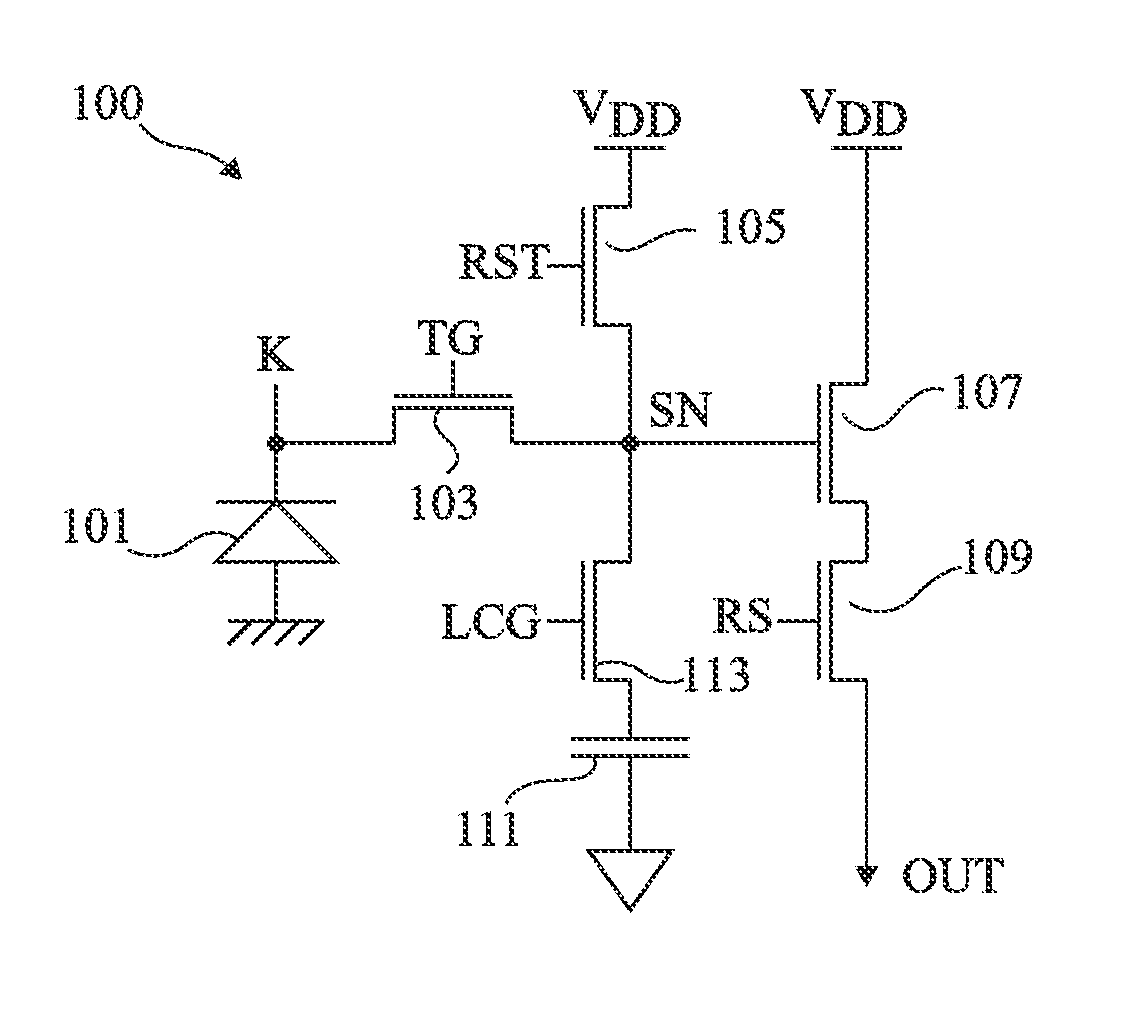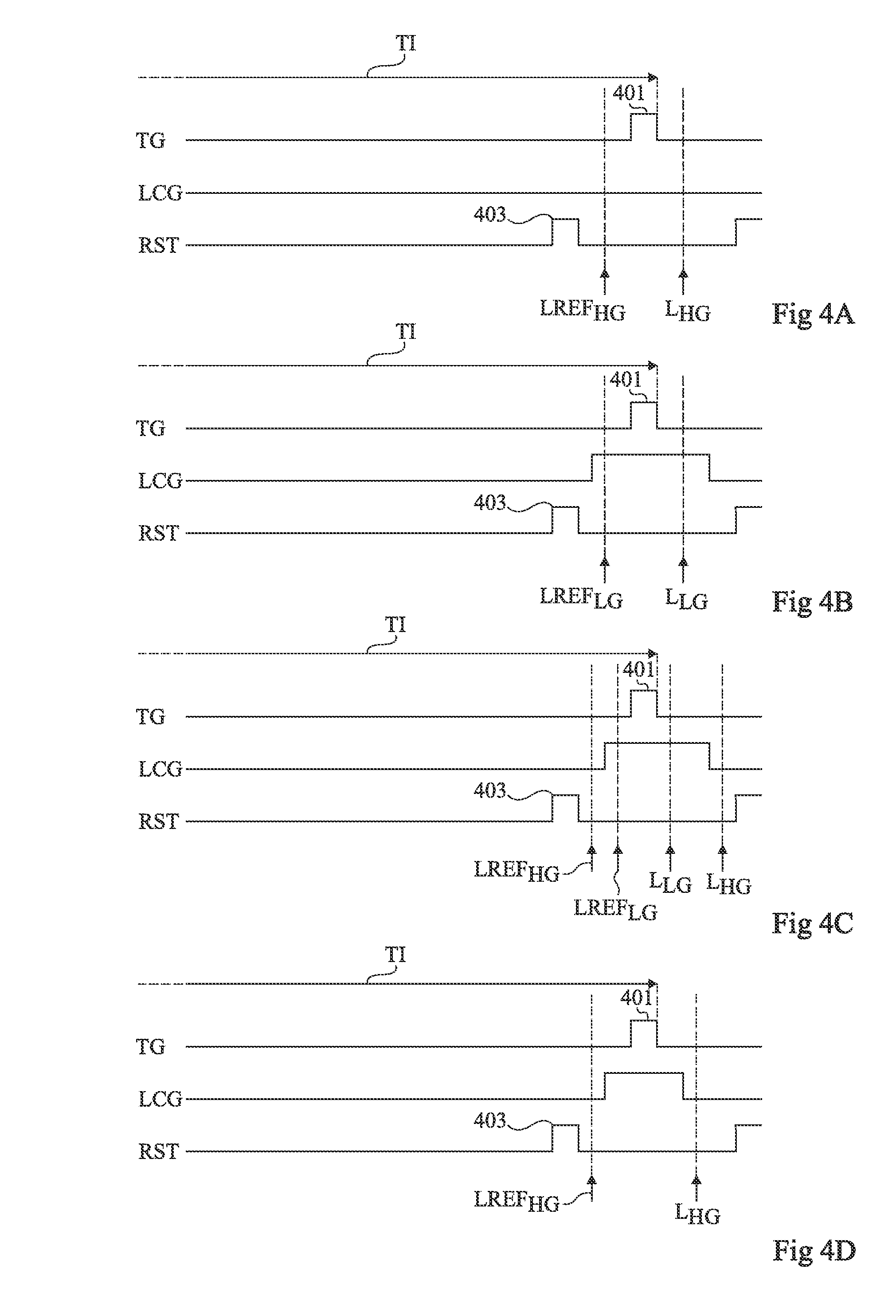Dual conversion gain image sensor cell
- Summary
- Abstract
- Description
- Claims
- Application Information
AI Technical Summary
Benefits of technology
Problems solved by technology
Method used
Image
Examples
Embodiment Construction
[0023]For clarity, the same elements have been designated with the same reference numerals in the different drawings and, further, as usual in the representation of integrated circuits, the various drawings are not to scale. Further, in the following description, unless otherwise indicated, terms “approximately”, “substantially”, “around”, and “on the order of” mean “to within 10%”, and terms referring to directions, such as overhanging, covering, topping, lateral, above, under, etc., apply to circuits arranged as illustrated in the cross-section views of the corresponding drawings.
[0024]FIG. 1 illustrates an electric diagram of an example of a pixel 100 having a dual charge-to-voltage conversion gain. Pixel 100 comprises a photodiode 101 having its anode connected to a node or rail of application of a low voltage GND, generally the ground, and having its cathode K, or accumulation node, coupled, via a transfer transistor 103, to a sense node SN. Sense node SN is coupled by a reset ...
PUM
 Login to View More
Login to View More Abstract
Description
Claims
Application Information
 Login to View More
Login to View More - R&D
- Intellectual Property
- Life Sciences
- Materials
- Tech Scout
- Unparalleled Data Quality
- Higher Quality Content
- 60% Fewer Hallucinations
Browse by: Latest US Patents, China's latest patents, Technical Efficacy Thesaurus, Application Domain, Technology Topic, Popular Technical Reports.
© 2025 PatSnap. All rights reserved.Legal|Privacy policy|Modern Slavery Act Transparency Statement|Sitemap|About US| Contact US: help@patsnap.com



